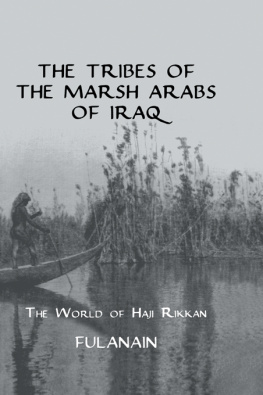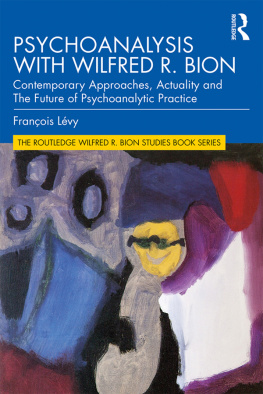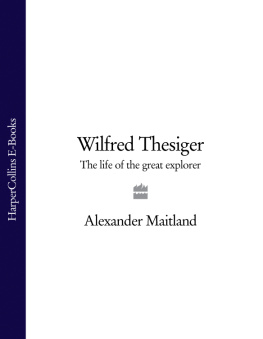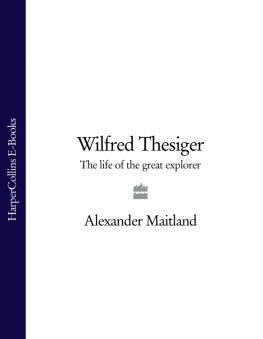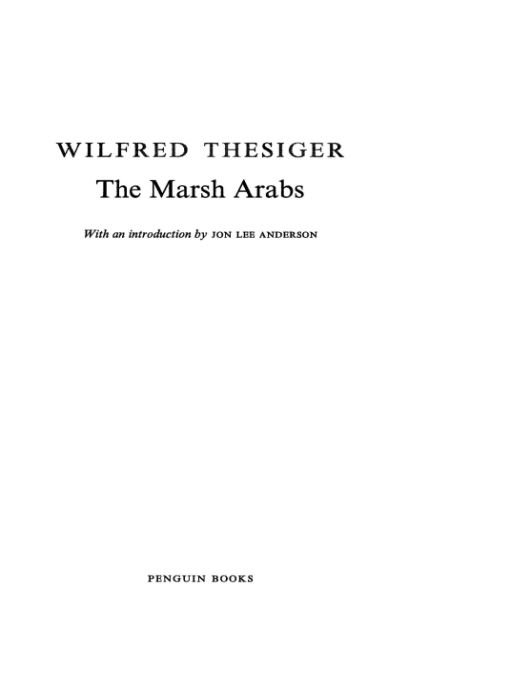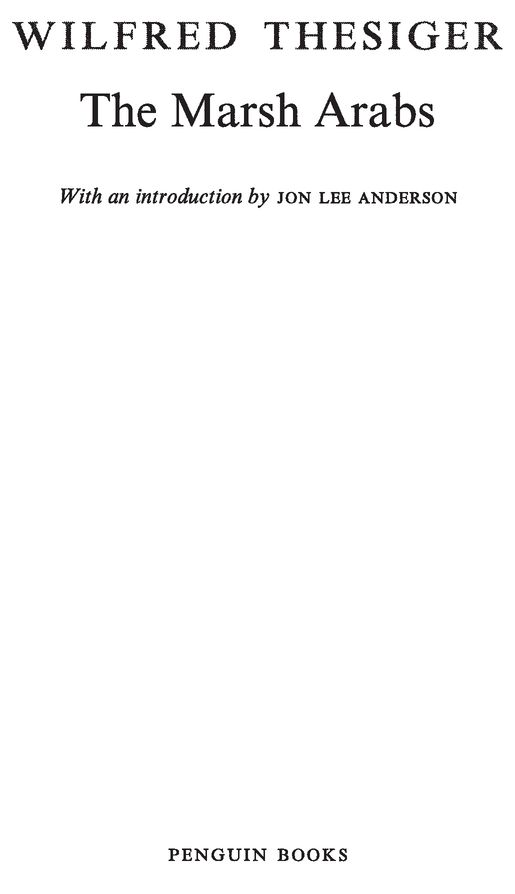Table of Contents
THE MARSH ARABS
WILFRED THESIGER was born in Addis Ababa in 1910 and educated at Eton and Oxford where he got his blue for boxing. In 1935 he joined the Sudan Political Service and, at the outbreak of the Second World War, was seconded to the Sudan Defence Force. He later served in Abyssinia, Syria and with the SAS in the Western Desert, and was awarded the DSO. After the war he travelled in Arabia, Kurdistan, the Marshes of Iraq, the Hindu Kush, the Karakorams, Morocco, Abyssinia, Kenya and Tanganyika, always on foot or with animal transport. In recognition of his journeys he received the Founders Gold Medal from the Royal Geographical Society, the Lawrence of Arabia Medal from the Royal Central Asian Society, the Livingstone Gold Medal from the Royal Scottish Geographical Society and the Burton Memorial Medal from the Royal Asiatic Society. He was a Fellow of the Royal Society of Literature and an Honorary Fellow of the British Academy. In 1968 he received the CBE, and a knighthood in 1995.
In his two greatest books, The Marsh Arabs, which won the 1964 W. H. Heinemann Award, and Arabian Sands, he gives a vivid account of a way of life which, until recently, had continued for thousands of years. Arabian Sands, is also published in Penguin Classics. Wilfred Thesigers other books include Desert, Marsh and Mountain: The World of a Nomad, his autobiography, The Life of My Choice, and Visions of a Nomad. An accomplished photographer, he donated his extensive collection of negatives to the Pitt Rivers Museum in Oxford. Wilfred Thesiger died in 2003.
JON LEE ANDERSON, an American journalist, has written for the New Yorker magazine since 1998. He has reported frequently from Iraq and Afghanistan, as well as from such countries as Lebanon, Liberia, Angola, Venezuela, Cuba, and Iran. Anderson is the author of several books, including Che Guevara: A Revolutionary Life, The Fall of Baghdad, The Lions Grave: Dispatches from Afghanistan, and Guerrillas: Journeys in the Insurgent World. He lives in Dorset, England, with his wife and three children.
For my Mother
To whose encouragement and understanding
I owe so much
Introduction
When the explorer Wilfred Thesiger visited Iraqs southern Marshlands for the first time in October 1950, he was forty years old, and feeling restless. He had undertaken gruelling expeditions deep into the Sahara desert and the remotest parts of Abyssinia, hunted marauding lions in the Darfur, and fought bravely against the Germans and Italians in the Second World War. After several years spent traversing the Empty Quarter, the vast and virtually unexplored desert of south-eastern Arabia, in the company of Bedouin nomads, he was searching for a new wilderness in which to immerse himself. I had spent many years in exploration, he wrote, but now there were no untouched places left to explore, at least in the countries that attracted me. I therefore felt inclined to settle down among a people of my choosing.
Thesiger had been drawn to Iraq, where the ancient land of Mesopotamia retained a strong allure for intrepid Westerners seeking to follow in the footsteps of Freya Stark, and T. E. Lawrence and Gertrude Bell before her.
I was on my way south from Iraqi Kurdistan, where I had gone to recapture the peace of mind I had known in the deserts of Southern Arabia. There I had lived with the Bedu [Bedouin] for five years, and with them had travelled ten thousand miles across country where no car had ever been until seismic parties, the vanguard of modern progress, began to arrive in search of oil.
He enthused lyrically about his time riding on horseback over wild and beautiful Kurdish mountains with rustic tribesmen who, he noted approvingly, still wore the finery of tribal dress ... hung with daggers and revolvers and crossed with decorated bandoliers, heavy with cartridges. But it had not been enough for him.Travel was too restricted, rather like stalking in a Highland deer forest ... I was fifty years too late.
Thesiger lived in a perpetual state of lament about the world he saw changing around him. He yearned to have lived in a time when he could have forged on endlessly, like the dauntless explorers of the nineteenth century, into the great unknown. As his biographer, Alexander Maitland, suggested in Wilfred Thesiger: The Life of the Great Explorer (2006),
Thesigers impossible dream had been to preserve the near-idyllic life he had known as a boy in Abyssinia. He viewed change dismally, as a threat to the tribal peoples he admired, and to himself as a traditionalist and romantic who cherished the past, felt out of step with the present, and dreaded the future. Such a reactionary outlook was doomed from the start, and Thesiger knew it ... He took an aggressive pride in being the last in a long line of overland explorers and travellers, a refugee from the Victorians Golden Age.
Thesiger was educated at Eton and Oxford but, more importantly, he had been born in 1910 in Abyssinia. In those days, the capital, Addis Ababa, was a remote outpost, and the British Legation, which his father headed, was little more than a collection of thatched huts. At the age of six, he had witnessed the unforgettable spectacle of the emperors armies celebrating their battlefield triumph against the rebel leader Negus Mikael. The
Guardian journalist Jonathan Glancey, who met Thesiger in 2002, noted that the battle had marked the historic end of an era: The fighting had been entirely hand-to-hand, one of the last great pitched battles between traditional African warriors. About 26,000 died. The victory parades had a profound impact on the young Thesiger, who later wrote:
I believe that day implanted in me a lifelong craving for barbaric splendour, for savagery and colour and the throb of drum, and it gave me a lasting veneration for long-established custom and ritual, from which would derive later a deep-seated resentment of Western innovations in other lands, and a distaste for the drab uniformity of the modern world.
The fifties were probably the end of the best times in the Middle East for a roving Old Etonian. The British Empire was in its death throes. India had gone, and so had Palestine, but Iraq, ruled by a pliant Hashemite monarchy, still lay within Britains dwindling sphere of influence. The widespread hostility towards the West that would engulf the region with the rise of radical Arab nationalism was still a few years away and so were commercial jet travel, mass tourism and Islamic fundamentalism. The oil-producing Arab states were beginning to develop, but the great boom of energy wealth that would transform their countries had not yet occurred. There were not so many people, either. The worldwide population boom of the postwar years had begun, but in 1957, Baghdad was a city of a mere 900,000 people, and the whole of Iraq had only 8 million citizens. In the hinterland, meanwhile, there were still a few wild places to be explored.
For the better part of eight years, Thesiger found the escape he was looking for in Iraqs Marshes. Believed by many historians to be the site of the biblical Garden of Eden and Great Flood, the Marshlands had been the cradle for human civilization 5,000 years before. They were, wrote Thesiger, a world complete in itself, a 6,000-square-mile area of wetlands created by the Tigris and Euphrates rivers before they join to form the Shatt al Arab waterway, which flows past Basra on its way into the Arabian Gulf. The Sumerians, the ancestors of the modern Marsh dwellers, had controlled the river water with an elaborate irrigation system that was later destroyed by Genghis Khans grandson, Hulagu, when he laid waste to Mesopotamia in 1258.



